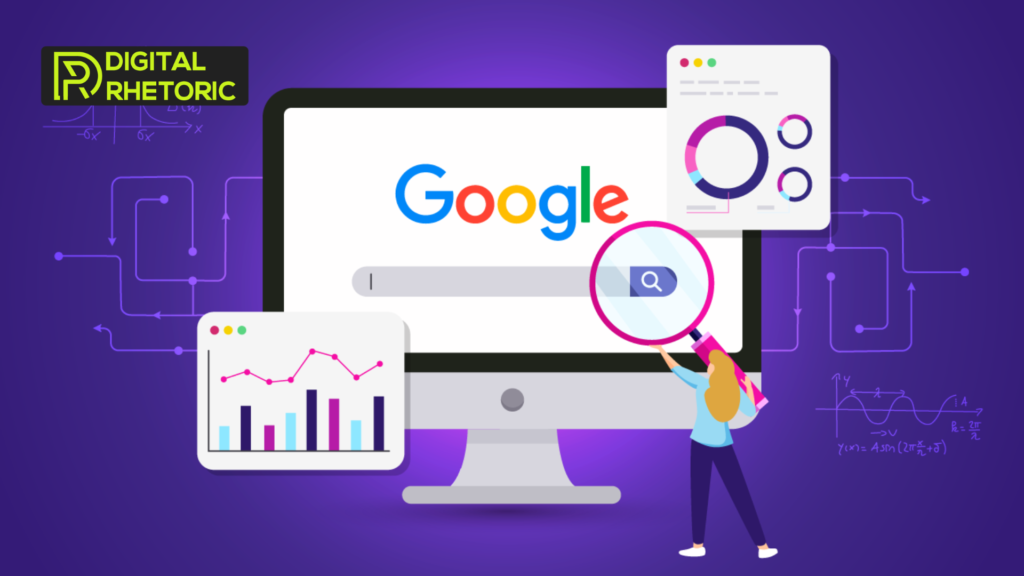
Google’s latest update reinforces the importance of Core Web Vitals in Search Engine Optimization (SEO). Websites with fast load times, mobile responsiveness, and smooth user experiences rank higher. To stay ahead, businesses must optimize performance, enhance engagement, and focus on delivering high-quality content that aligns with user intent.
Focus on Helpful Content
The latest Google algorithm update emphasizes SEO ranking factors like high-quality, user-focused content over keyword-stuffed or AI-generated spam. To maintain rankings, businesses must create valuable, original, and informative content that aligns with user intent. Prioritizing relevance, credibility, and engagement is key to sustaining long-term search visibility and success.

E-E-A-T Matters More
Along with Core Web Vitals, Google now emphasizes Experience, Expertise, Authority, and Trust (E-E-A-T) as key ranking factors. Websites must establish credibility through authoritative sources, expert-authored content, and in-depth research. Prioritizing user experience, fast load times, and high-quality content will help businesses maintain strong search visibility and rankings.
Page Experience & Core Web Vitals
Search engine optimization now heavily depends on fast loading speed, mobile-friendliness, and a seamless user experience. Websites that prioritize these factors rank higher in search results. Optimizing images, leveraging caching, and using responsive design can enhance performance, ensuring better engagement, lower bounce rates, and improved search visibility.

AI & Search Intent Optimization
The latest Google algorithm update emphasizes AI-driven understanding of user intent. Websites must focus on conversational, natural language content to align with search queries. Prioritizing question-based formats, long-tail keywords, and contextually relevant information can enhance visibility, ensuring better engagement and improved rankings in an increasingly AI-powered search landscape.
Zero-Click Searches & Featured Snippets
With evolving SEO ranking factors, more users receive answers directly on search pages without clicking links. To maintain visibility, businesses must optimize for structured data, featured snippets, and knowledge panels. Implementing schema markup and answering queries concisely can help secure prime search real estate and drive organic traffic.

Local & Voice Search Optimization
With the rise of voice search-friendly content and local SEO, businesses must adapt to changing search behaviors. Using long-tail keywords and location-based optimizations helps capture relevant traffic. Ensure your content is conversational, mobile-friendly, and includes geo-targeted keywords to enhance visibility in voice searches and local search results.
Conclusion: What’s Next?
To stay ahead of Google’s evolving algorithms, businesses must continually refine their SEO strategies, prioritizing user experience, credibility, and AI-driven optimizations. Stay competitive by embracing the latest digital marketing trends. Visit Digital Rhetoric today and elevate your SEO game for long-term success! Start optimizing now!
.
.
.
What is Google’s latest algorithm update and why does it matter?
Google’s latest algorithm update focuses on improving user experience by refining how websites are ranked in search results. It impacts key SEO ranking factors like page speed, mobile usability, and content relevance, making it crucial for website owners to stay up to date.
How does the new Google algorithm update affect SEO ranking factors?
The update puts more emphasis on user experience signals such as Core Web Vitals, mobile-friendliness, and secure browsing. Websites that fail to meet these standards may see a drop in search engine rankings, while optimized sites can gain a competitive edge.
What are Core Web Vitals and why are they important for SEO?
Core Web Vitals are a set of performance metrics—Largest Contentful Paint (LCP), First Input Delay (FID), and Cumulative Layout Shift (CLS)—that measure loading speed, interactivity, and visual stability. These have become essential SEO ranking factors in Google’s latest algorithm update.
How can I optimize my website for the latest Google algorithm update?
To optimize for the latest Google algorithm update, focus on improving Core Web Vitals, using responsive design, creating high-quality content, and ensuring a secure, fast-loading website. Regularly auditing your site for technical SEO issues is also key.
Will this algorithm update affect all websites equally?
No, the impact varies depending on your website’s current performance and SEO practices. Sites that already prioritize user experience and follow best practices in search engine optimization may benefit, while poorly optimized sites could experience a rankings decline.

